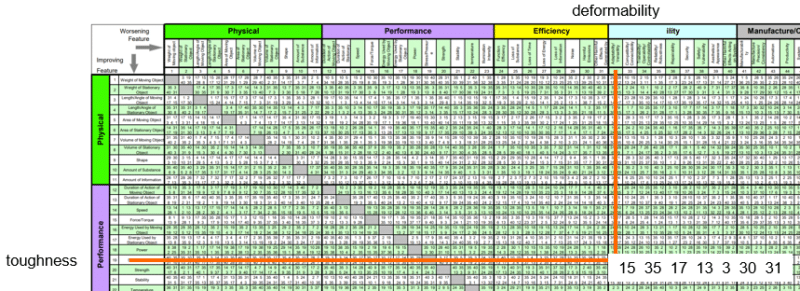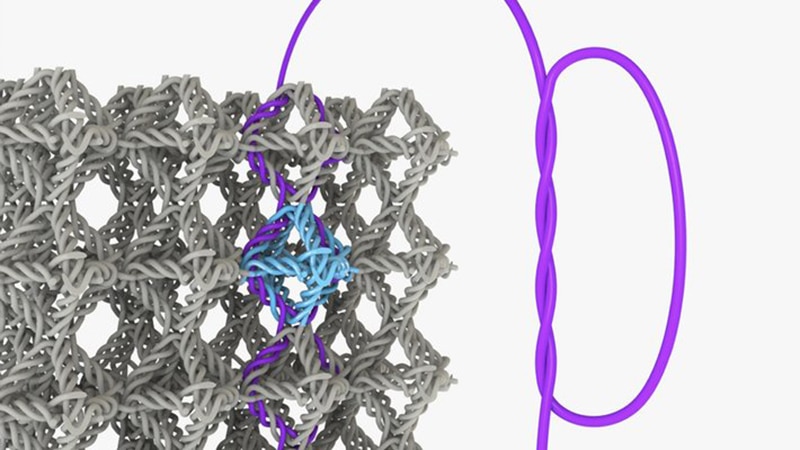A long time ago, before I’d heard of TRIZ, one of the coolest aerospace projects I worked on was knitted turbine blades. This was the early days of fibre-reinforced composite materials, and one of the biggest challenges was packing as much fibre into the structure as possible, because they were the things that gave the bulk of the overall strength of the blade. The big idea was that if we knitted the fibres (well, strictly speaking, we outsourced the knitting to a company that had machines for knitting garments), the prize would be enormous. Just the idea of knitting turbine blades was enough to convince the sponsors to fund the development (aerospace R&D Rule #1 – always use other people’s money). The ultimate win-win-win project – sponsors get something cool to talk about, we get a stronger, more capable turbine blade and the knitter earns a lot more money knitting blades than they do knitting M&S jumpers. The only slight problem was it didn’t work. Safe to say we got carried away with the sexiness of the idea rather than the practicalities. The forces on a spinning turbine blade are enormous. Imagine tying a human hair to a double-decker bus and then holding one end of the hair and using it to spin the bus and that should give you a pretty good idea of the problem. When we were just using straight fibres everything was okay. But when we knitted the fibres, they weren’t arranged in straight lines anymore, they were wavy lines. Which meant that when they were put to work spinning the bus, they didn’t want to be wavy, they wanted to be straight. In these kinds of fight, the double-decker bus tends to win. The good news was that the composite material placed around the knitted fibres did a pretty good job of keeping the fibres in their wavy shape in the short-term. The problem was that it didn’t take long before the filler started to crack. If that doesn’t sound like good news, you’re probably right. Apart from the fact that the blade failure was relatively slow rather than sudden and catastrophic. This meant that, in theory, it would be possible to inspect the blades between flights to make sure they weren’t cracked. Some theory. The sort that is the exact opposite of Ideal Final Result engineering. And so the project sadly fizzled out and everyone walked away a little bit embarrassed.
That was the 1980s. Nothing really happened between then and now. The prize of fibre-reinforced composites with very high fibre density is still enormous. Solving the problem just needed a jump in thinking. A jump that recognises there’s a contradiction – the blades (or aircraft wings, or medical devices) need to be tough and also deformable without damage (i.e. capable of withstanding high levels of strain, if you’re a mechanical engineer). Here’s what the Contradiction Matrix has to say about solving that conflict:

Now, I grant you that it’s a fairly big leap to go from Inventive Principles 3, Local Quality, 17, Another Dimension, and 31, Holes to the idea of tying knots in the fibres, but then again until such times as there’s a specific Principle called ‘knots’, 3, 17 and 31 are the only way TRIZ is going to get us there.
Anyway, that’s kind of beside the point. The point is that tying knots in the fibres turns out to be an exceptionally good way of challenging the toughness-versus-strain conflict. According to the inventors – a team of engineers at Caltech – the micro-scale (~70micron diameter) knots give a doubling of both parameters. In material property evolution terms, that’s quite a prize. Here’s a recently published image of their knotty fibre structure…

…and here’s where you can read more about it – ‘Microscale knots’ could make tougher materials for biomedicine and aerospace (imeche.org)
Time for me to go revisit the old knitted-blade patents. And, thinking about the Matrix result, to also have a deeper look at what Principle 13, The Other Way Around is trying to tell us about this new knot-based paradigm…
